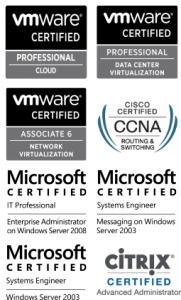Scenario
You have a home lab set up so you can experiment with the latest and greatest software and technology. You could be using VMware ESXi, Hyper-V or another hypervisor for your lab, but they don’t come with shared storage built-in. You need shared storage to set up features like Failover Clustering.
Luckily, you don’t have to spend a fortune to get an iSCSI SAN for your home lab. As the name suggests, FreeNAS is FREE!
Read on to learn how to install FreeNAS 8.2. I’ll be using VMware Workstation, but the process is similar for most hypervisors.
Solution
- Open VMware Workstation and start the New Virtual Machine Wizard:

- Go through the wizard using the following settings:














- We need to add another Hard Disk for the Data drive, so click Customize Hardware, making sure you have unticked Power on this virtual machine after creation:

- Click Add:

- Configure another Hard Disk as before:





- Turn on the FreeNAS VM to start the install, selecting 1 at the first screen:

- Select the smallest drive for the FreeNAS Operating System files:

- Although there is no previous installation, you may get this message anyway (select yes):

- Select yes:

- Select yes again:

- Select OK, and unmount the FreeNAS ISO from the CD config in VMware Workstation:

- Select 3 to Reboot:

- Once rebooted, select 1 to Configure Network Interfaces. Fill in your required network settings:

- Open a browser and enter the IP Address you just configured.
- Enter the admin username and password to login (this isn’t needed the first time as the admin password is not set):

- Once logged in you will see the start page:

- Navigate to Settings > General to update the Timezone:

- Navigate to Network Settings > Global Configuration to update the hostname, domain and DNS servers:

That’s about it for the initial configuration.
My next post will be on Configuring iSCSI on the FreeNAS 8.2 SAN. Once shared storage is set up, you can do things like Failover Clustering.

hi adam ,
can i install FreeNAS on Hyper-v or do i need Hyper-v integration pack for that….
I’ve not used FreeNAS on Hyper-V yet, but I don’t see why not.